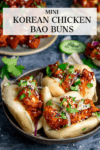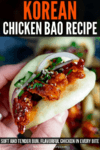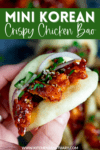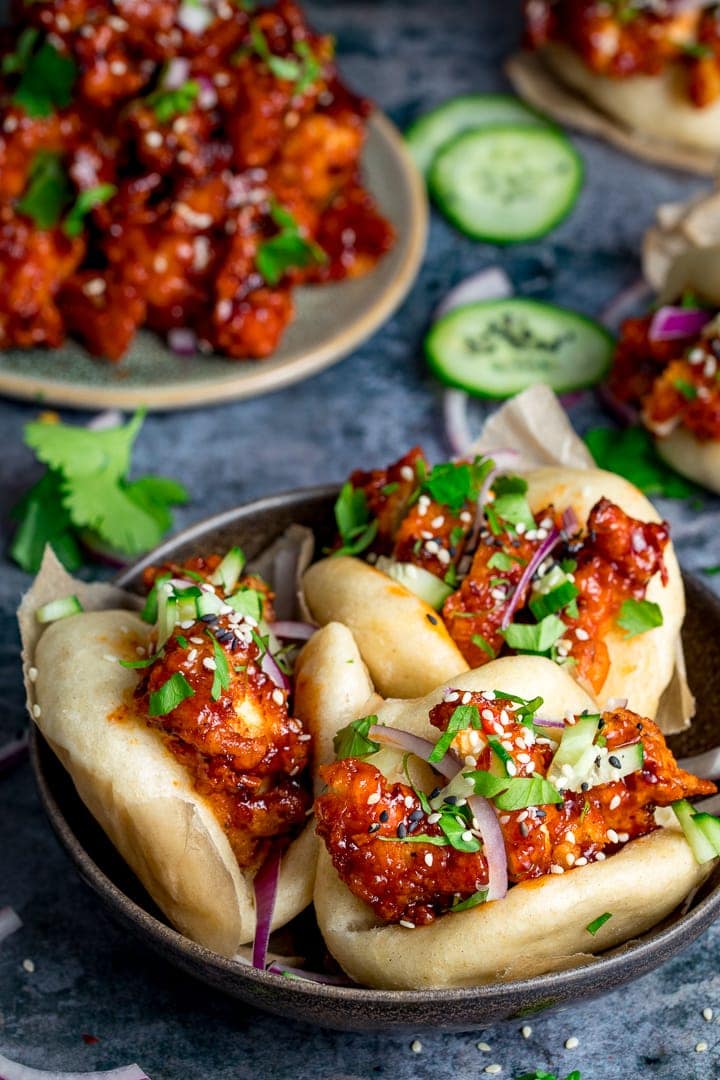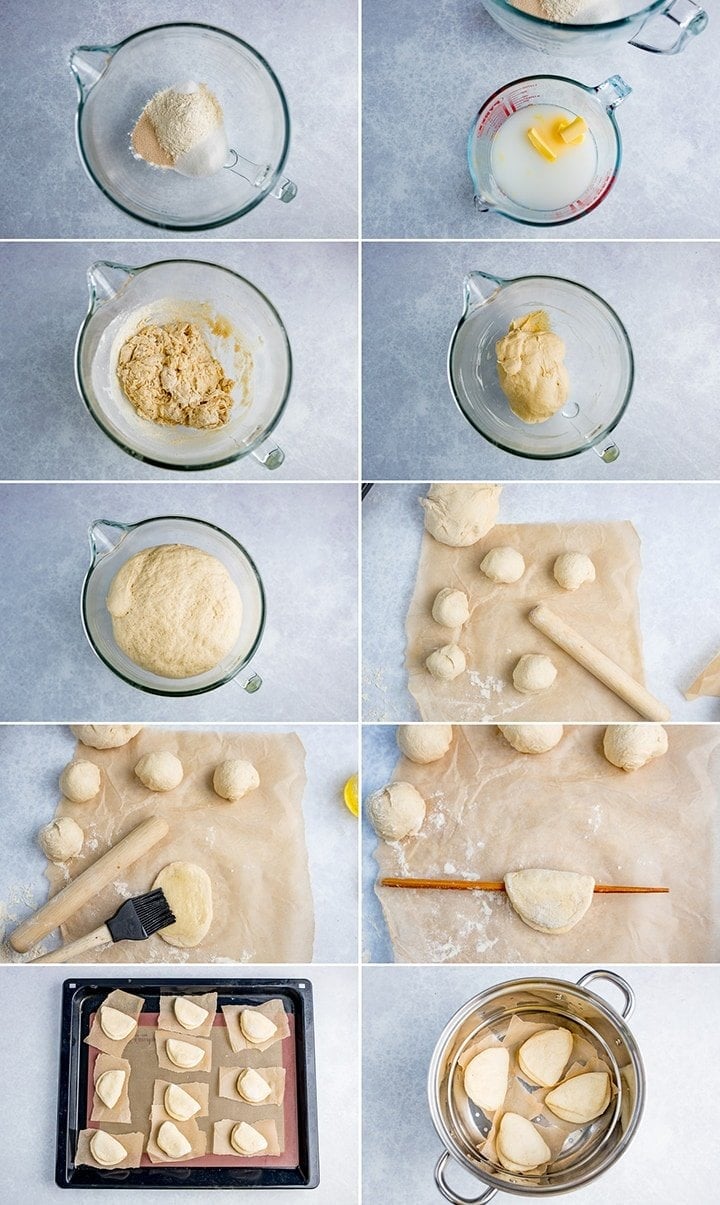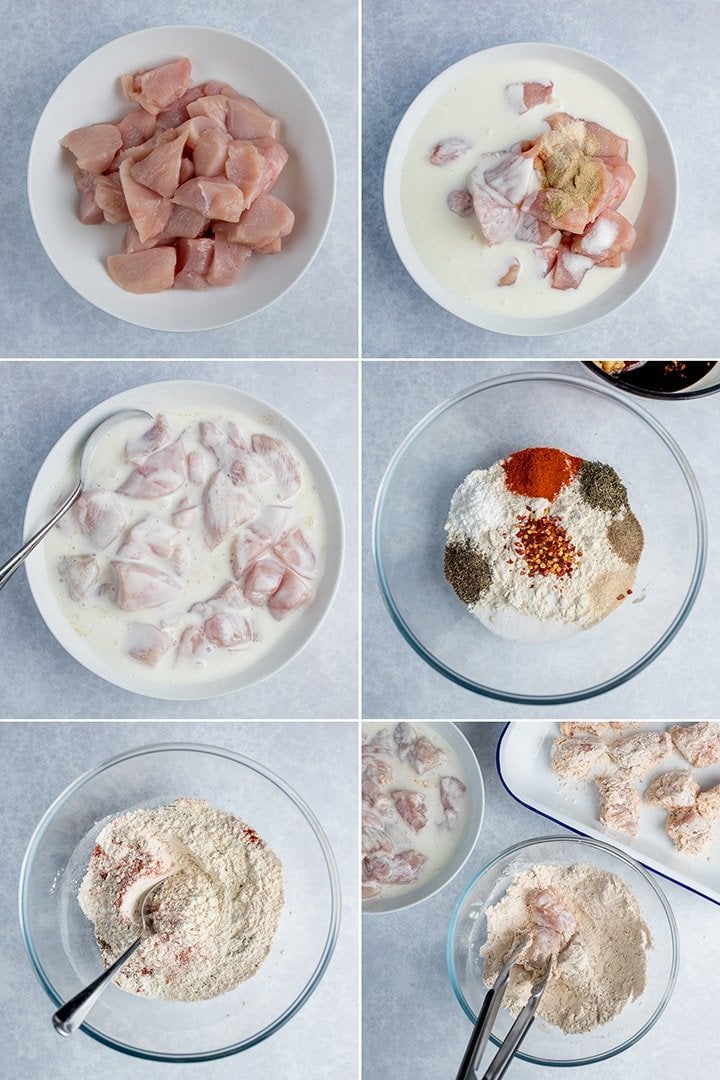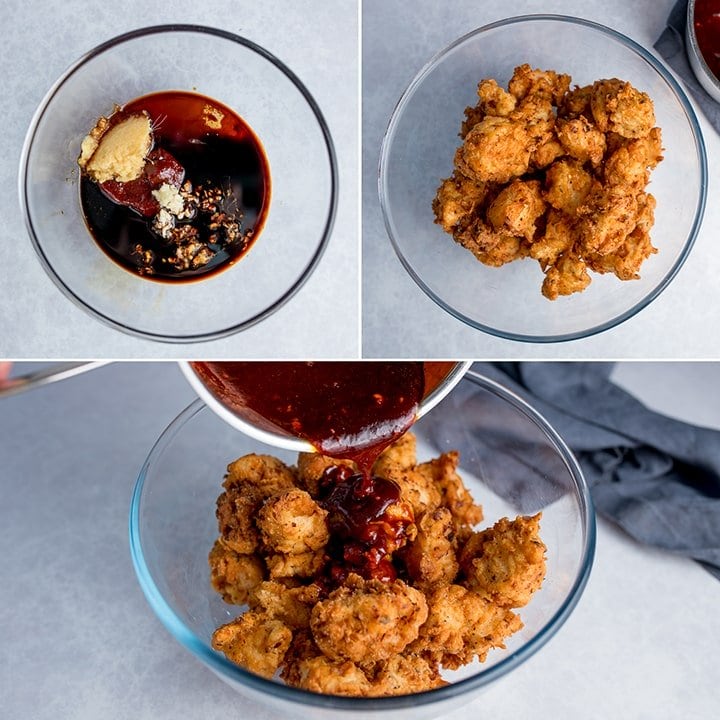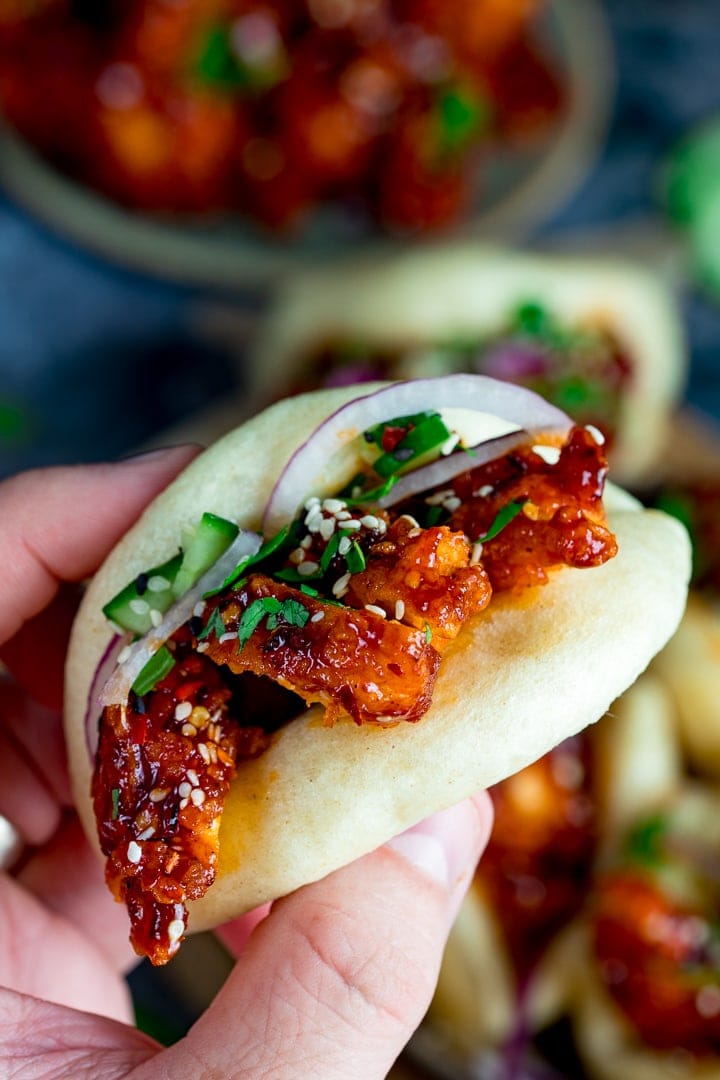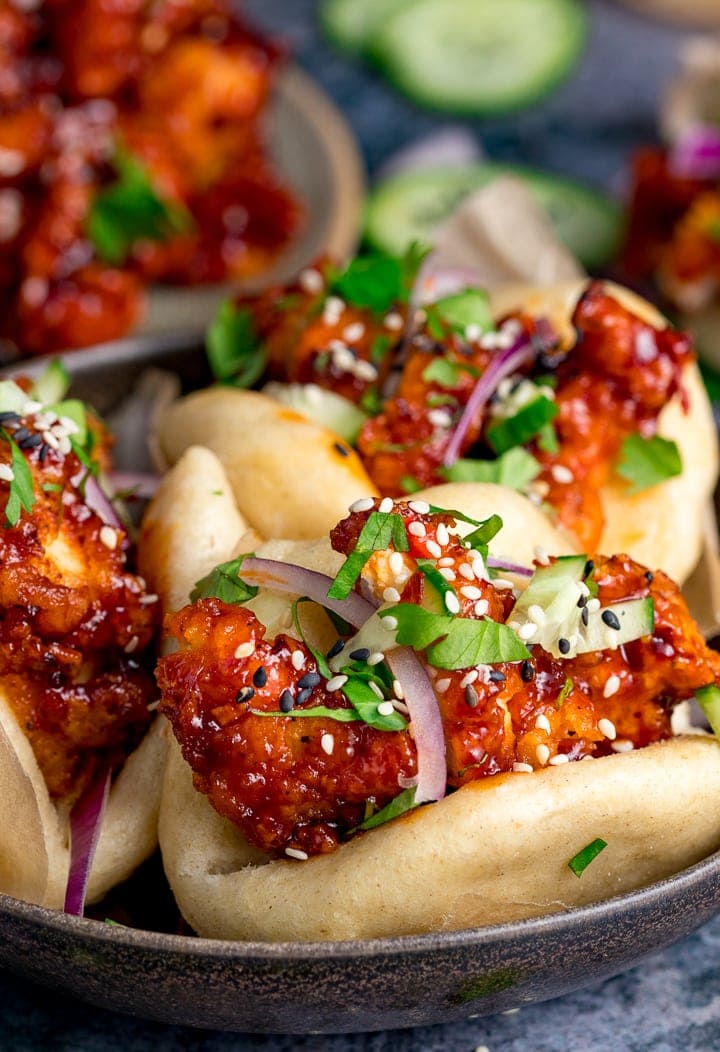I’d love to tell you these Korean Chicken Bao Buns are really quick to make, but I’m gonna say it right now. They do take a bit of time and effort. The recipe itself is easy, there are just quite a lot of steps and a bit of proving time. It really is worth it though. Make them as a Christmas party food, make them for dinner, make them for an indulgent lunch. You will not be disappointed!
I start off making dough for the buns:
I’ve written (and tested) this recipe using my steam pan.(<– affiliate link). If you don’t have one, I thoroughly recommend getting yourself one. I use mine all the time for steaming veggies. They’re stack-able, so you’re saving hob space too – which is very useful when you’re making something with multiple dishes – like a good old roast beef dinner. I normally start marinading the chicken when the buns are going through their first prove. Then I shape the bao buns and let them prove a second time. Then I fry the chicken at the same time as I start steaming the bao buns.
For the chicken:
Marinade the chicken in buttermilk, salt, white pepper and garlic salt for at least an hour. Then we coat the chicken in my special crispy chicken mixture (check out the recipe card for the full list of ingredients).
The chicken is then fried, before being coated in spicy gochujang sauce. This is a mixture of gochujang paste (<– affiliate link), honey, brown sugar, soy sauce, garlic and ginger that’s been bubbled together until sticky and syrupy. Pour the mixture over the crispy chicken toss together:
Carefully open the steamed bao buns and stuff with the Korean chicken. Top with slices of red onion, fresh coriander (cilantro), cucumber and sesame seeds before serving. I’ve got a few tips in the recipe card below if you’d like to make any parts of the recipe ahead of time.
What is gochujang?
Gochujang is a Korean fermented red chilli sauce or paste with a smoky-sweet and slightly spicy flavour. Some brands are spicier than others. I prefer the paste, rather than the sauce for a stronger flavour. It’s a fantastic addition to sauces and marinades, as it adds heat, richness, tang and a little sweetness. I use it in lots of recipes (beef bulgogi, Pork ramen, Korean steak grilled cheese, sticky Asian ribs to name a few).
The Korean Chicken Bao Video:
The Korean Chicken Bao Recipe:
Some of the links in this post may be affiliate links – which means if you buy the product I get a small commission (at no extra cost to you). If you do buy, then thank you! That’s what helps us to keep Kitchen Sanctuary running. The nutritional information provided is approximate and can vary depending on several factors. For more information please see our Terms & Conditions.
